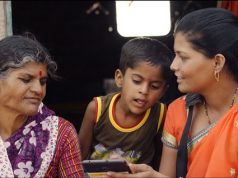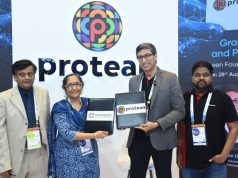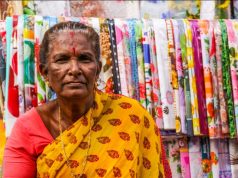Bridging the digital finance gender gap
One of the most promising ways to close the stubbornly persisting gender divide is technology. While inclusion is growing for everyone, women tend to lag men globally when it comes to having access to financial products in emerging markets. In many contexts, women have less access and are less adept in the use of technology.
The large gaps in mobile subscriptions (there are some 300 million fewer women subscribers than men worldwide) and ownership (women in developing countries are 21% less likely to own a mobile phone than men) means that if digital financial services are going to deliver on their promise to women, these gaps need to be taken into consideration.
Women’s access to mobile finance is affected by the fact that far fewer women own a mobile phone than do men. Cell phones are an inspirational and utilitarian item that most of them long for. The key to harnessing mobile technology will be to make sure women have equal access to phones in the first place.
The overall gender gap in mobile phone ownership in the developing world is wider than the bank account ownership gaps. The onus is now on mobile providers to start making products more suitable and affordable for women.
One reason for the technological divide is that smartphones are not marketed as an empowerment tool. Making gadgets available will surely help but we also have to bring about a change in the overall outlook.
Complementary efforts are needed to ensure that women are digitally literate, connected, engaged and actively benefitting from these services. It will require thinking very hard about the motivators that will pull the consumers into this new space.
For instance, women require small value products and services with low fees to typically meet grocery purchase or pay medical bills. Innovative touchpoints in neighbourhood clinics or pharmacies can help.
The development of new and revolutionary ways of providing digital financial services, mainly credit, through the use of new technologies and of non-traditional information-based credit scorings represent a promising opportunity for women-led businesses lacking access to credit.
Banks are now using advanced analytical techniques for building alternate credit assessment models and surrogate ways of establishing proper credit profiles of potential borrowers who do not have formal credit history. Mobile money services have made this task easier. The data associated with their payments to merchants, property owners, and utility companies can serve as proof of their solvency.
Over time, this would make it easier to assess customers’ repayment capability, as most of the cash flow will become digitally recorded. This will lead to lenders being able to conceive and build automated credit decision models, which reduces the cost of credit underwriting.
Technology can help in three main ways: by making identity checks easier; by lowering costs; and by enabling new forms of credit assessments. The increasing use of cash transfers in programmes targeted at women (for instance, in the conditional cash transfers or CCT) constitute a valuable vehicle to support an initial interaction between the payment receivers and the financial sector.
Many state governments In India have adopted the default savings options by mandatorily delivering all wages to participants of government schemes and programmes through formal saving accounts. For example, the Mahatma Gandhi National Rural Employment Guarantee Act (MNREGA) states that at least one-third of its beneficiaries should be women and their payments should be delivered via electronic transfers to bank accounts.
More creative approaches to shrinking this gap will closing the intractable divide.
This article was first published in the April 2019 issue of our print magazine. To grab a copy, click here.
 Dr Moin Qazi is an author, researcher and development professional who has spent four decades in the development sector. He is a member of the National Institution for Transforming India (NITI) Aayog Committee on Financial Inclusion for Women. He has worked for three decades with State Bank of India as a grassroots field officer, program manager, policymaker and researcher in development finance.
Dr Moin Qazi is an author, researcher and development professional who has spent four decades in the development sector. He is a member of the National Institution for Transforming India (NITI) Aayog Committee on Financial Inclusion for Women. He has worked for three decades with State Bank of India as a grassroots field officer, program manager, policymaker and researcher in development finance.
Views of the author are personal and do not necessarily represent the website’s views.
Thank you for reading. In addition, your thoughts and inputs will genuinely make a difference to us. Please drop a line and help us do better.
Regards,
The CSR Journal Team













